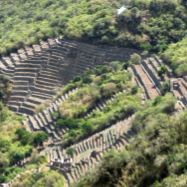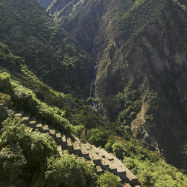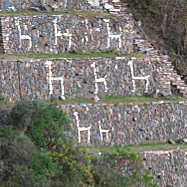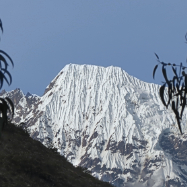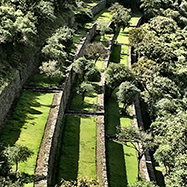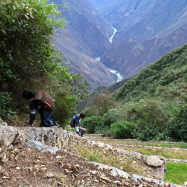
History of Choquequirao
Choquequirao dates to the same time period as Machu Picchu and was likely first constructed by the great Inca Pachacutec. If it was ever lost, it was ceratinly rediscovered by the 18th century, but it has been protected by its remoteness ever since. These days the trail to Choquequirao is in good shape and there is a small settlement nearby with excellent campsites. The constructions are classic Inca, although not quite as elaborate as some of the buildings in Machu Picchu. The acutal site is significantly bigger than Machu Picchu and has not been entirely uncovered. Infact, the llama figures located on the steep mountainside behind the main square were only discovered in the 90s.
Natural Wonders
The Choquequirao Trek explores a variety of different ecosystems, many of which remain realitively untouched. This is great route to see many varieties of birds, butterflies, and orchids (depending on the season) etc. We see condors on virtually every trip and even hear reports of spectacled bears regularly, although you would be pretty lucky to actually see one.
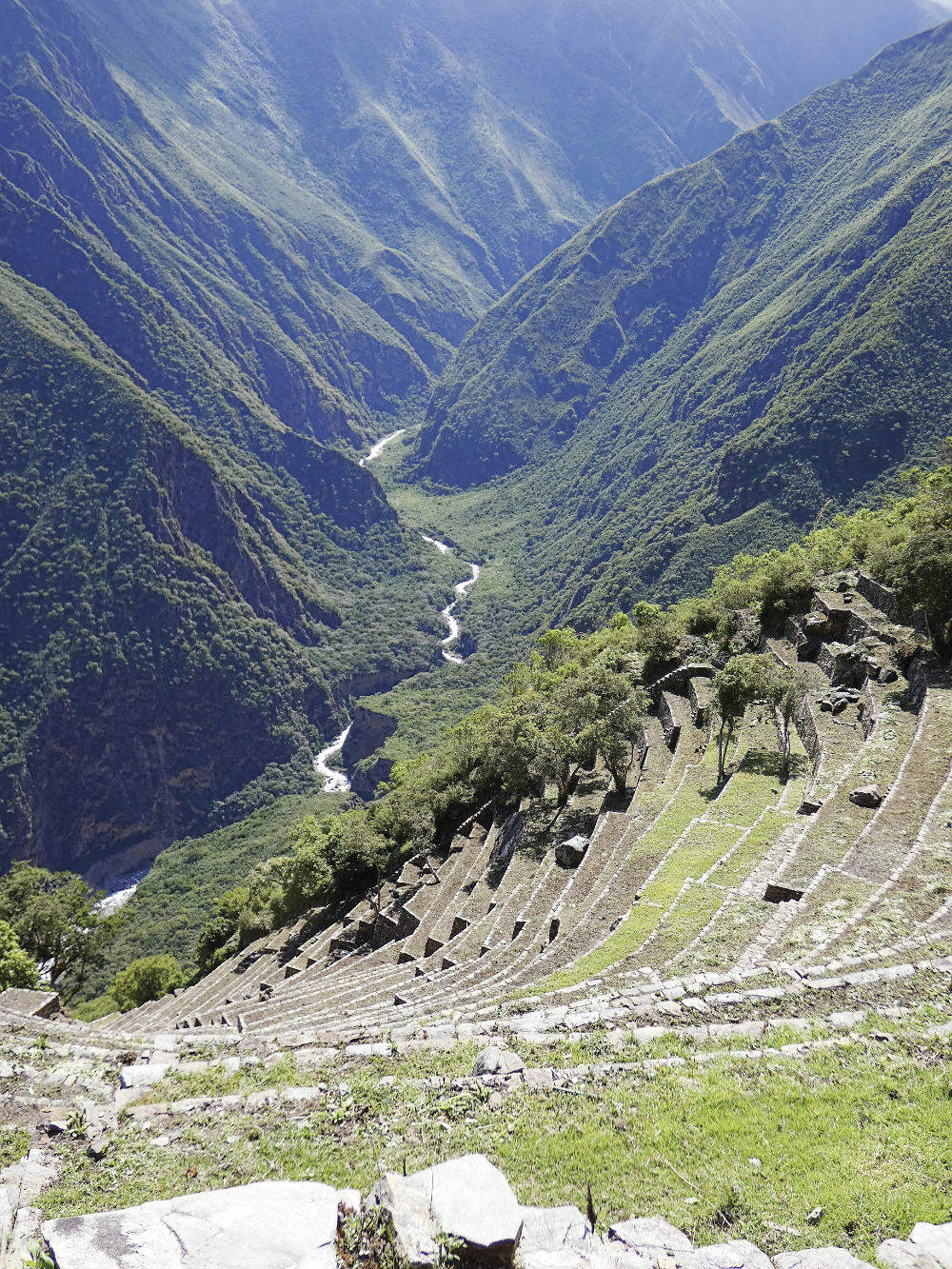
Choquequirao to Machu Picchu
The trek begins by descending into and then climbing out of the spectacular Apurimac Canyon. Choquequirao is located on a ridge on the other side of the canyon. After a full-day visiting the ruins, we continue past the ruins, visit the Pinchaunuyoc site and then continue into excellent cloud forest. We descend to the Rio Blanco and then a long ascent over two days to Victoria Pass. The trek ends in a village called Yanama where a vehicle will pick us up and bring us to the short hike to Machu Picchu.
Difficulty
Choquequirao is a stenuous trek which involves some long ascents, as much as 1500 meters (5000 feet), up dirt trails in tropical conditions. You should be reasonably fit to do this trek and be prepared to spend full days walking. That being said, most people do make it without resorting to the emergency horse.
This Trek Includes
For more information contact us: lostcitytreks@gmail.com
